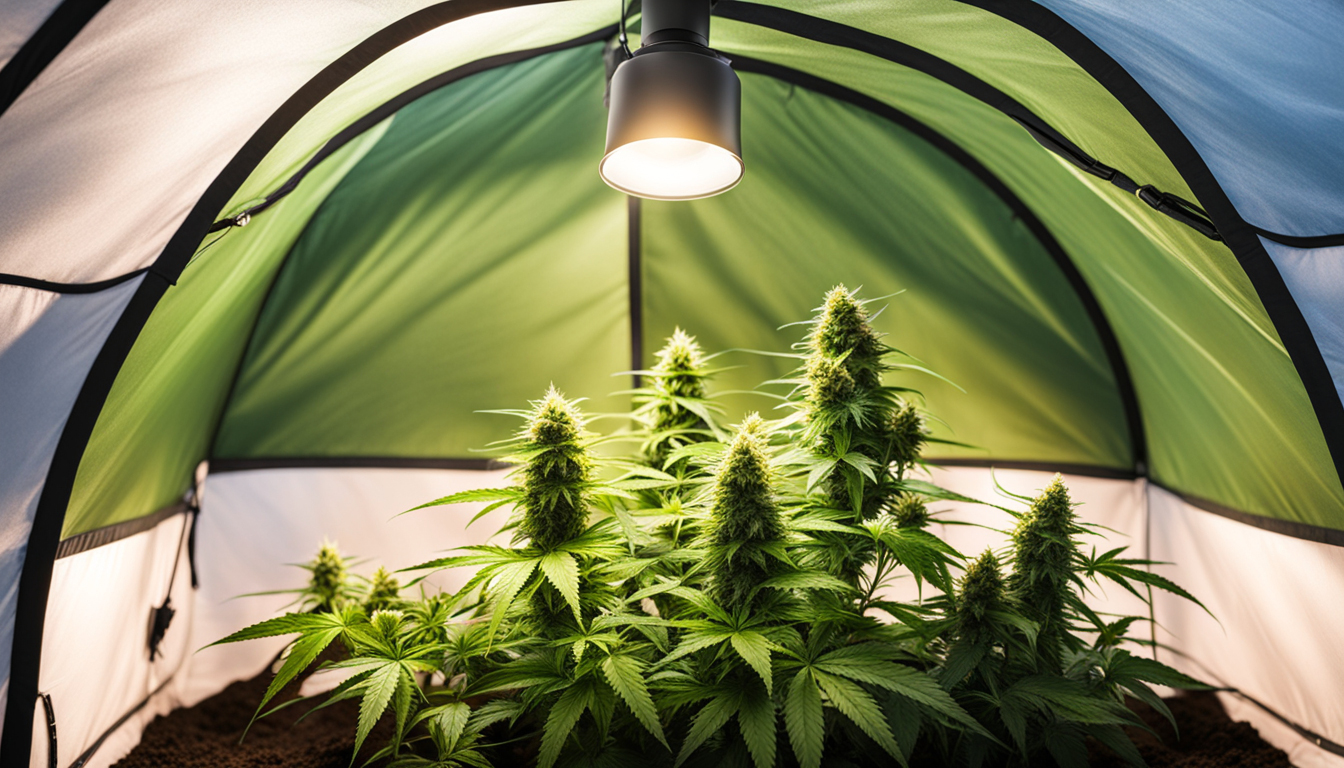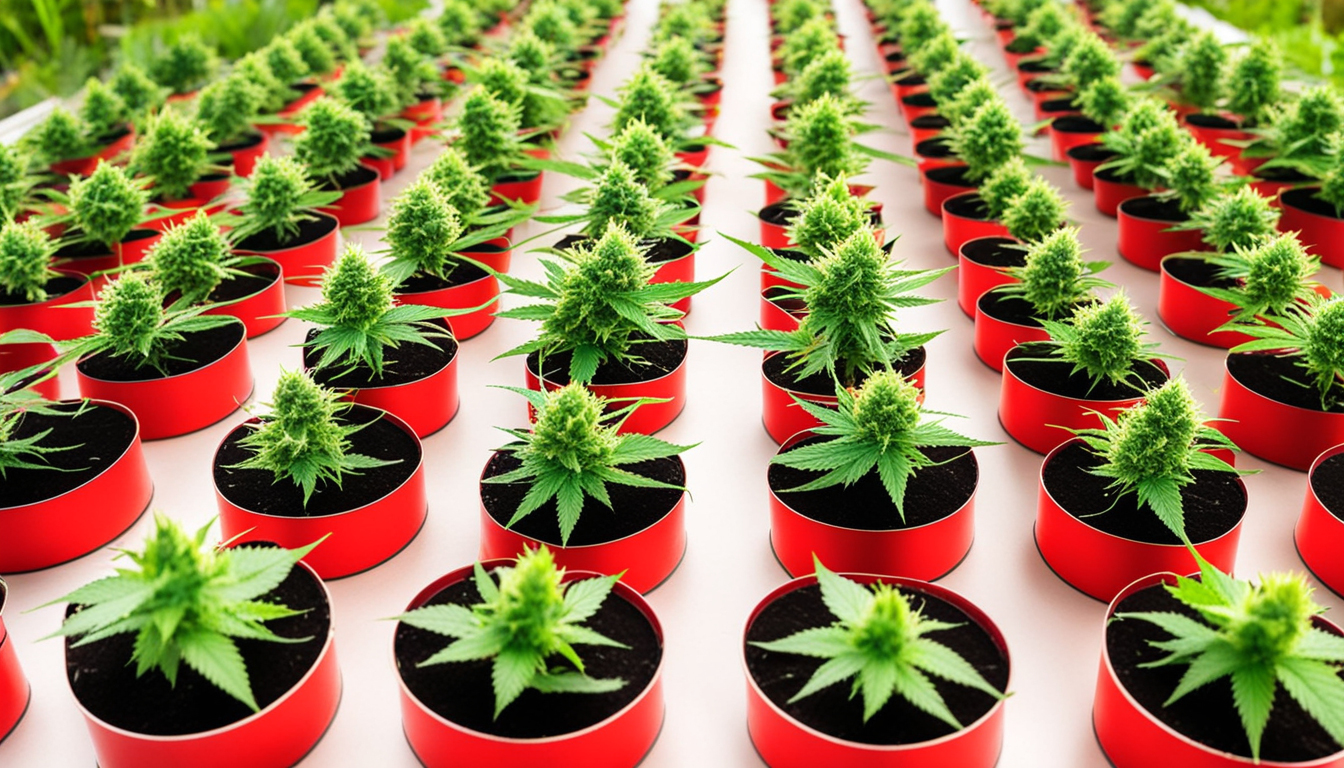Cannabis Growing Guide

Whether you're just starting out with marijuana growing or looking to improve your existing crop, following this complete guide will help you produce big, high-quality yields right at home. With the right equipment, techniques, and attention, growing pot indoors can be an extremely productive and cost-effective endeavor.
Choosing Marijuana Strains
The first step in planning your indoor grow is picking the right pot varieties to grow. The three main types of weed plants each have their own qualities.
Energizing strains
Known for their invigorating intellectual effects, sativas spread tall and slender with narrow leaves. They flourish in hotter equatorial climates and have a longer blooming time between 2.5-3 months indoors. Top sativa strains include Jack Herer, Durban Poison, Super Lemon Haze, and Jack Herer.
Relaxing strains
Indicas provide calming body-focused effects and grow short and bushy with broad leaves. Accustomed to colder mountain climates, they bloom faster within 8-9 weeks. Popular indica varieties include Granddaddy Purple, Northern Lights, and Bubba Kush.
Hybrids
Mixed strains blend traits from both energizing strains and indicas. They offer blended effects and have moderate blooming periods around 9-10 weeks. Popular hybrids are OG Kush, Girl Scout Cookies, and Blue Dream.

Setting Up Your Grow Space
Pot plants need the right controlled environment to thrive. Key factors for indoor grows are lighting, airflow, layout, and finding the ideal discreet location.
Location
Choose an available space with quick access to water and electrical outlets. An empty spare room, large closet, corner of the basement, or grow tent securely placed in a garage all make great hidden cultivation room spots.
Lighting
Pot requires strong light for all vegetative stages. LED grow lights are efficient and come in full spectrum options replicating natural outdoor light. Cover 15-25 watts per sq. ft for the vegetative stage and 20-40 watts per square foot for bloom.
Ventilation
Proper airflow and exhaust systems keep ideal temperature, humidity, and pure CO2 levels. Install silent 10-15 cm fans or scrubbers to circulate stale air and reduce smells.
Layout
Maximize your space by arranging plants carefully under the lights and leaving room to reach and work around them. Set up separate zones for vegetation, bloom, drying, and propagation.

Cultivation Substrates
Cannabis can be cultivated in various mediums, each with pros and cons. Pick a suitable option for your specific setup and cultivation style.
Soil
The traditional substrate, soil is inexpensive and simple for beginners. It provides great flavor but requires more watering and nutrients to feed plants. Enrich soil with vermiculite or coir to enhance drainage.
Coco Coir
Made from coconut husks, reusable coconut fiber retains water but still allows air to the roots. It's more sterile and more consistent than soil. Use coir-specific nutrients to avoid calcium buildup.
Hydroponics
In hydro systems, plant roots grow directly in fertilizer irrigation solution. This enables quick development but needs careful observation of solution properties. DWC and irrigation systems are popular methods.
Sprouting Seeds
Germination activates your weed seeds to begin sprouting taproots. This prepares them for planting into their cultivation medium.
Paper Towel Method
Place seeds between damp paper towels and keep them moist. Check after 2-7 days for emerging taproots indicating germination is complete.
Direct Planting
Insert seeds right into wetted cultivation medium 6mm deep. Gently water and wait 1-2 weeks until sprouts push through the surface.
Rockwool Cubes
Presoak cubic rockwool starters in balanced water. Place seeds 6mm deep into the cubes. Keep cubes wet until sprouts appear within a week to 2 weeks.
Transplanting Seedlings
Once sprouted, weed seedlings need to be transplanted to avoid overcrowding. Move them into proper sized pots.
Ready Containers
Load final pots with growing medium amended with slow-release fertilizer. Let pots to soak up water for 8-12 hours before repotting.
Carefully Transplanting
Gently separate young roots from sprouting medium using a spade. Put into prepared container at same depth as before and gently water in.
Growth Stage
The vegetative stage promotes foliage and plant form through 3/4 to full day of daily light intensity. This stage usually lasts 4-8 weeks.
Using 3/4 to full day of Light
Use grow lights on a 24 daily schedule or natural sunlight to trigger nonstop growth. Light intensity influences height and node distance.
Fertilizing
Use vegetative stage fertilizers richer in nitrogen. Make sure pH stays around 5.8-6.3 for proper nutrient uptake. Fertilize 1⁄4 to 1⁄2 strength after 14 days and strengthen slowly.
LST and topping
Topping, low stress training, and scrogging direct shoot patterns for flat foliage. This increases yields.

Flowering Stage
The blooming stage develops buds as plants reveal their sex under a 12/12 cycle schedule. It lasts 2-3 months depending on variety.
Switching to 12/12
Change grow lights to 12 hours on, 12 hours off or move outside for natural 12 hour cycle. This signals plants to start blooming.
Stop Fertilizing
Leaching removes fertilizer residuals to improve flavor. Fertilize lightly the first period then just use plain water the last 2 weeks.
Flushing
Continue 12 hour photoperiod but flush using pH-balanced water only. Return to plain watering if buds aren't yet mature after two weeks.
Reaping
Knowing when marijuana is fully ripe delivers peak cannabinoid content and aroma. Cut down plants at peak ripeness.
Identifying Ripeness
Check fading pistils, swelling calyxes, and 10-15% cloudy trichs. Inspect buds across the plant as they won't all mature evenly.
Cutting Plants
Use sterilized, razor-sharp trimming scissors to carefully slice each plant at the base. Keep several inches of stalk attached.
Curing
Hang intact plants or colas upside down in a lightless room with moderate temperature and humidity around 45-65% for 1-2 weeks.
Curing
Aging keeps drying while aging the buds like aged spirits. This process smooths bitterness and further develops terpene contents.
Jars and Humidity
Manicure cured buds from stems and place into sealed containers, packing about 3⁄4 full. Use a hygrometer to monitor container humidity.
Burping Daily
Unseal containers for a few Watch Now hours daily to slowly reduce moisture. Remoisten buds if humidity goes under 55%.
Long term storage
After 14-21 days when humidity stabilizes around 55-60%, do a last trim and store forever in sealed jars.
Common Problems and Solutions
Even seasoned cultivators run into different cannabis plant problems. Identify problems soon and address them properly to maintain a vibrant garden.
Poor feeding
Yellowing leaves often indicate inadequate nitrogen. Anthocyanins and leaves show phosphorus deficiency. Test pH and boost fertilizers slowly.
Pests
Spider mites, fungus gnats, mites, and root aphids are frequent pot pests. Use neem oil sprays, ladybugs, and sticky traps for organic control.
Powdery mildew
Excessive moisture promotes powdery mildew and bud rot. Improve airflow and circulation while lowering RH under 50% during bloom.

Conclusion
With this complete indoor weed cultivation guide, you now have the knowledge to grow bountiful strong buds for private grows. Follow these steps and techniques throughout the germination, growth, and bloom stages. Invest in quality gear and closely check on your plants. In time, you'll be rewarded with frosty aromatic buds you raised yourself under the patient guidance of your green hands. Happy growing